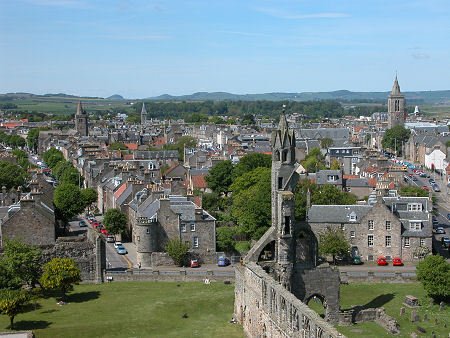 St Andrews |
James Ivory lived from 17 February 1765 to 21 September 1842. He was a distinguished mathematician. The wider picture in Scotland at the time is set out in our Historical Timeline.
James Ivory was born in Dundee and educated at Dundee Grammar School. In 1779 he became a student at the University of St Andrews, where he excelled in mathematics. He subsequently studied theology, but quickly gave up on the idea of a career in the church and in 1786 became a mathematics and natural philosophy teacher at Dundee Academy.
In 1789, Ivory entered the business world, becoming a partner in a flax mill at Douglastown in what is now Angus. Meanwhile, he continued to spend as much time as possible developing his mathematical ideas. In 1796 he published a paper in the Transactions of the Royal Society of Edinburgh, setting out analytical expression for the rectification of the ellipse. He followed this with papers on cubic equations in 1799, and in 1802 on Kepler's problem, about the interaction between two bodies.
The flax mill went bust in 1804, and Ivory obtained a post as Professor of Mathematics at the Royal Military College at Marlow (a precursor to Sandhurst). Ivory's work at Marlow resulted in his being awarded the Copley Medal for science in 1814, and his becoming a Fellow of the Royal Society in 1815. Amongst his other achievements was the development of what is known as Ivory's theorem, to do with ways of calculating the attractions between ellipsoids and points. His later work examined astronomical refraction and planetary perturbations and he went on to receive a series of mathematical awards.
In 1831, King William IV granted Ivory a state pension of £300 per annum, and made him a Knight of the Royal Guelphic Order or Hanoverian Guelphic Order. By the time of his death in London in 1842 he was a fellow of many learned societies, including the Royal Society of Edinburgh, the Royal Irish Academy, the Royal Academies of Sciences in Paris and Berlin, and the Royal Society of Göttingen.
